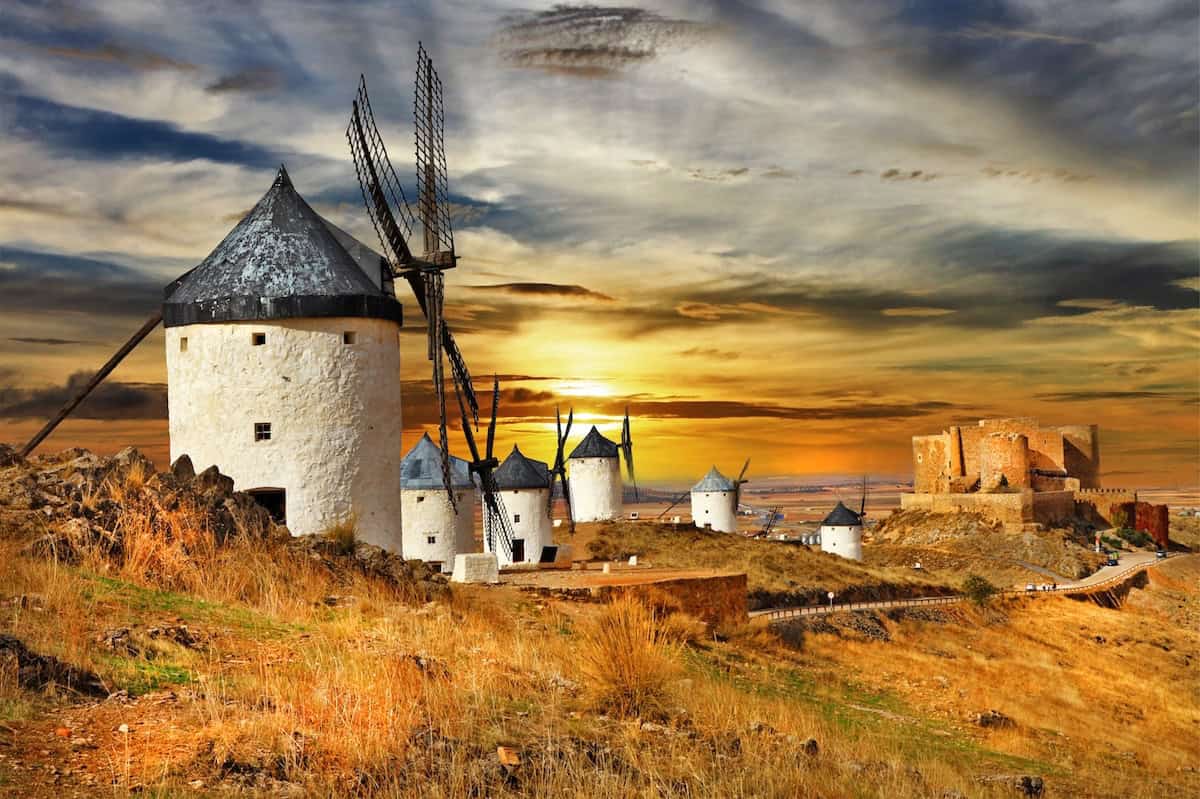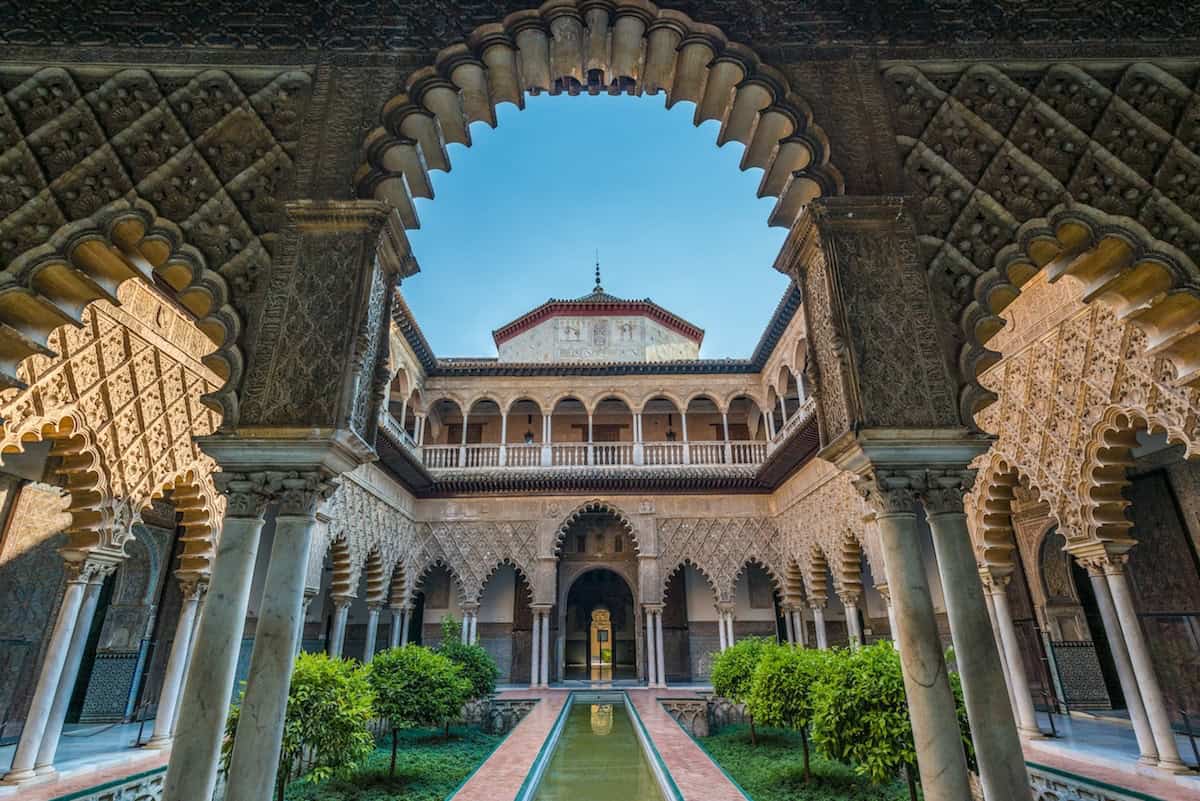Transport comes in so many different forms in Spain – each with its own joys. Explore the country by train and tram, bike and boat, car and cablecar to discover fabulous views and historic highlights in Andalucia, Catalonia, Mallorca, the Canary Islands and more
Look for great deals on tours and activities at hellotickets.co.uk
Ride the slow train
Best for… scenic travel along the north coast
Faster isn’t always better – which is just as well if you’re taking this ponderous little chugger across northern Spain. The FEVE – Ferrocarriles de Vía Estrecha, to give it its full name, meaning ‘Narrow-gauge railways’ – trundles languidly on a handful of routes between Bilbao in the Basque Country and Ferrol in Galicia, with stretches accessing Gijón, Oviedo and other northern highlights. This route is all about the journey, definitely not the destination (or at least reaching it in a hurry) – the little train takes three hours to travel between Bilbao and Santander, more than twice as long as a bus, and you’ll need several days to complete the full traverse. What is does offer, though, is dramatic scenery as it scoots between the Atlantic coast and the looming Pico de Europa mountains, and the chance to stop at any number of small towns and villages to sample local Asturian sidra (cider) and queso azul (blue cheese), Galician pulpo (octopus) and of course Basque pintxo (tapas), particularly in artsy capital Bilbao.
Whizz up Teide by cable car
Best for… easy access to Spain’s highest peak
The tallest mountain in Spain isn’t on the mainland – Mount Teide looms 3,718m above the Canary Islands, and on clear days provides breathtaking panoramic views across the island’s rugged landscapes to La Gomera, El Hierro, La Palma and Gran Canaria. You can hike up, of course – but you’ll need to book a permit well in advance, and be prepared for a strenuous 9km (one-way) climb that takes around six hours. Or… you can ride the cable car from the base station to La Rambleta (3,555m), from where three walking routes offer options: there’s the 40-minute climb to the summit (permit required), or simply walk along the level trail to La Fortaleza viewpoint. Either way, make sure your camera memory card has plenty of space…
Cruise the Guadalquivir River in Seville
Best for… absorbing golden-age history from water level
Once the most powerful city in Moorish Spain, then a mercantile city grown rich with the wealth of the New World, Seville is an open-air museum of magnificent architecture. A cruise along the Guadalquivir river that meanders through the city is a wonderful way to get a new perspective on Seville’s marvels – admire the Moorish minaret-turned-belltower known as the Giralda, the mysterious octagonal Torre del Oro, the docks from where Ferdinand Magellan set sail, and the other delights of the historic old centre.
Cycle a Catalan greenway
Best for… pedal-powered exploration
The rail-to-trail movement is big in Spain, where some 2,700km of disused railway lines have been converted into smooth cycle paths, here called Vías Verdes – Greenways. There’s an abundant network of tracks to choose from, snaking past mountains and monasteries, castles and coastline, and through some of the most spectacular scenery this diverse country has to offer. With tracks ranging from just a couple of kilometres to nearly 130km, there’s something for everyone, whether you want to explore the Basque Country or Andalucia in depth, or take a gentle amble through Valencia or along the Cantabrian coast. Our pick is the Terra Alta Greenway, zooming downhill from Aragon to the Ebro River, alongside the dramatic rock outcrops of Els Ports Natural Park, through Horta de Sant Joan (pause to peruse the Picasso Museum) and down to Tortosa, past olive groves and gorges, craggy hills and tempting cafés.
Take a Don Quixote road trip
Best for… literary loops through central Spain
The story of the sad and deluded knight-errant of La Mancha, written in the early 17th century by the literary maestro Miguel de Cervantes, is reputedly the second-most translated book after the Bible. A seven-day Don Quixote driving itineraryloops around the heart of Spain, visiting the Cervantes house-museum in Alcalá de Henares, the author’s reputed resting place in Madrid, his wife’s hometown of Esquivias, the white windmills of Campo de Criptana, and the Don Quixote Museum in Ciudad Real, as well as stately Toledo and the rolling hillsides of La Mancha through which the eponymous hero, his long-suffering sidekick Sancho Panza and steed Rocinante rode.
Trundle by tram in northern Mallorca
Best for… a nostalgic ride to the seaside
The picturesque little town of Port de Sóller, ranged around a pretty horseshoe-shaped bay, is a delight in itself, with its white-sand beach, charming promenade and renowned seafood restaurants. To arrive in style, take the vintage electric tramfrom nearby Sóller , inaugurated over a century ago in 1913. Three of the motor trams are vintage originals, along with two of the trailers; five more are old Lisbon trams. It’s a short ride – less than 5km, taking only around 20 minutes in total – but a delight nonetheless. The tram connects with trains from Mallorca’s capital, Palma.










